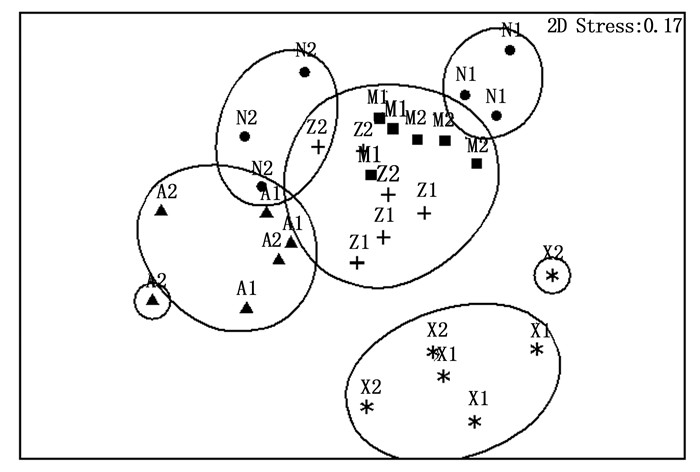-
人工林由于其经济价值日益成为全球森林的重要组分[1]。中国人工林面积居世界首位,面积达6 933万hm2,云南省绿春县人工林主要包括桉树林、橡胶林和紫胶林等。人工林的大面积种植使人们开始关注其对生物多样性的保护是否有利。有研究表明,人工林会降低生物多样性[2-3]。人工林中的物种丰富度和多度均减少,甚至当地种、特有种和被保护的稀有物种缺失,同时常见种的多度增加,使少量常见、分布广泛的物种占据优势地位[4-5]。除此之外,人工林的树种选择是影响生物多样性的因素之一,选择非乡土树种使本地物种无法适应这些外来树种及其所营造的环境[6-7],但目前国内针对人工林树种选择对生物多样性影响的研究,多是针对林内植物多样性,而对节肢动物的研究很少。
蚂蚁是地球上分布最广泛的昆虫,以其良好的分类知识库和对环境变化的敏感性经常被用来作为环境的指示生物[8]。研究发现,树冠层节肢动物群落中90%以上的个体为蚂蚁[9],而且树冠层蚂蚁的捕食压力,能够显著影响树冠节肢动物群落的多样性、群落结构和动态[10-11],进而对生态系统服务产生影响。树冠层蚂蚁多样性受到植被结构[12]、植物多样性[13]、栖息地干扰[14]和食物资源分布[15]等多种因素的影响。树冠层蚂蚁多数来自地表,但目前对于环境因子变化对树冠层蚂蚁群落的影响研究很少[16],特别是相关研究还未探讨地表环境特征与人工林垂直结构特征与树栖蚂蚁群落多样性之间的关系。
本研究对云南省绿春县桉树林、紫胶玉米混农林、天然次生林、橡胶林和紫胶林5种类型样地中树冠层蚂蚁群落多样性、植物多样性及地表栖境特征进行调查,通过比较分析人工林与天然林的蚂蚁群落多样性和植物群落多样性的差异及二者的相关性,进而分析天然林和人工林对蚂蚁群落多样性的影响及人工林树种的差异对蚂蚁群落多样性保护作用,以期为人工林的经营管理和生物多样性的保护提供依据。
HTML
-
研究地位于云南省绿春县(101°48′~102°39′ E、22°33′~23°08′ N),该地区属于亚热带山地季风气候。5种类型的样地分别为桉树林、紫胶林-玉米混农林、天然次生林、橡胶林和紫胶林,每种类型样地各2块,每块样地面积大于1 hm2,每2块样地间距离1 km以上,所选样地的坡度、坡向及土壤状况等条件基本一致。各样地情况见表 1。
样地
Site代码
Code海拔
Elevation/m主要特点
Main characteristics桉树林
Eucalyptus plantationsA1 1 407 以6年生桉树(Eucalyptus grandis Hill ex Maiden)为主,灌木和草本层发达,无明显人为活动 A2 1 420 紫胶林-玉米混农林
Lac insect-corn agroforestsM1 983 6~8年生南岭黄檀(Dalbergiabalansae Prain),种植密度约300株·hm-2,林下种植玉米,紫胶生产和粮食生产同时进行 M2 997 天然次生林
Seondary natural forestsN1 1 235 以高大阔叶树种为主,林下灌木和草本较少,地面有大量枯落物,其中N2干扰较大 N2 1 158 橡胶林
Rubber plantationsX1 511 30年生的橡胶树(Heveabrasiliensi(Willd. ex A. Juss.) Muell. Arg.),林下无灌木,有人为割胶,除草和施肥等活动 X2 558 紫胶林
Lac insect plantationsZ1 1 021 以6~8年生南岭黄檀为主,伴有少量的钝叶黄檀(Dalbergiaobtusifolia (Baker) Prain)和偏叶榕(Ficussemicordata Buch.-Ham. ex J. E. Smith),密度约900株·hm-2 Z2 1 065 Table 1. Information of 5 different sites
-
于2012年10月份(雨季)和2013年4月份(旱季),调查5种类型样地内的树冠层蚂蚁群落,具体方法为:每个样地设置3条100 m长的样带,样带间距大于50 m,在每条样带上选择5株乔木,至少间距10 m,保证样本独立性,共计15株乔木,所选择的乔木胸径在10 cm以上,对所选乔木进行编号。将树栖蚂蚁诱集陷阱固定在树干上距离地面1.5 m处,以浓度为50%的乙二醇作为陷阱溶液。在陷阱中使用支架设置诱饵提高诱集效果,支架下端浸没在陷阱溶液中,蚂蚁不能接触到诱饵,诱饵为金枪鱼和蜂蜜的混合物。设置48 h后收集陷阱中的所有蚂蚁,置于含有70%酒精溶液的离心管中,带回实验室进行鉴定并统计数量,无法鉴定到种的以形态种对待[17],根据种类鉴定结果整理出物种组成名录。
-
乔灌木群落调查:每块样地选择3个10 m×10 m的大样方,调查并记录乔木和灌木的植物种类、数量、胸径、树高和郁闭度。
草本植物群落调查:在放置树栖陷阱的乔木附近设置1个1 m×1 m的小样方,调查草本植物的种类、数量和盖度,同时估计小样方内的枯落物盖度并用5点法测量枯落物厚度并计算其平均值作为该样方的枯落物厚度值。
植物垂直密度变化:使用利维杆(长3 m,直径1 cm的铁杆)方法。以地表陷阱位置为参考,使用时将利维杆立于距陷阱水平距离1m的位置,垂直于地面,以每25 cm作为一个区段,共12个区段,统计该位置每个区段内植物与铁杆接触点的数量(不考虑植物与铁杆的接触面积),对于超过300 cm高度的植物密度,只统计有无,有植物覆盖记为1,无则记为0[18]。
-
使用R语言中的iNEXT软件包进行基于个体数的物种稀疏和预测曲线的绘制,根据曲线特征进行抽样充分性的判断[19]。
-
在比较树冠层蚂蚁群落多样性时,以设置的样带为重复,即按编号以5个陷阱为一组,每块样地有3个重复。统计蚂蚁物种丰富度和多度,并使用软件Estimate S计算ACE估计值。数据分析时,满足单因素方差分析条件时使用单因素方差分析(One-way ANOVA)中LSD多重比较方法,不满足时,进行Krushkal-wallis H检验,比较样地间树冠层蚂蚁群落多样性的差异。
-
对不同物种的多度数据进行有/无转换,重点关注不同类型植被树冠层蚂蚁群落在物种组成上的差异,使用PRIMER v7中的非度量多维尺度分析(Non-metric Multi-Dimensional Scaling,nMDS)分析不同类型样地树冠层蚂蚁群落结构差异;使用群落结构相似性比较不同类型样地间群落结构差异的显著性[20];对不同类型样地蚂蚁群落进行层次聚类分析(Hierarchical Cluster analysis),选取40%相似性水平将结果以圆圈的方式叠加到nMDS结果图中。
-
使用R语言中的indicspecies软件包对不同类型样地进行指示物种分析,分析时使用的分组基于nMDS群落结构分析结果,即相似蚂蚁群落结构的样地为同一类型,计算不同物种的特异度和保真度,同时计算IndVal值,以IndVal指示值大于0.7并与样地显著相关(P < 0.05)的物种作为指示物种[21]。
-
使用SPSS 18.0软件中的相关性分析对树冠层蚂蚁多样性和植物多样性进行分析,其中,树冠层蚂蚁多样性包括蚂蚁多度和物种丰富度;植物多样性包括草本植物的多度、物种丰富度和盖度,乔灌木植物的多度、物种丰富度和盖度,枯落物的盖度和厚度以及植物垂直密度。
1.1. 研究地概况
1.2. 调查方法
1.2.1. 树冠层蚂蚁群落调查
1.2.2. 植物群落调查
1.3. 分析方法
1.3.1. 抽样充分性判断
1.3.2. 多样性比较
1.3.3. 群落结构相似性
1.3.4. 指示物种分析
1.3.5. 相关性分析
-
5种类型样地共采集蚂蚁17 998头,隶属于6亚科29属68种,其中,桉树林共采集到蚂蚁3 606头,隶属于4亚科13属23种;紫胶林-玉米混农林共采集到蚂蚁5 421头,隶属于5亚科17属37种;天然次生林共采集到蚂蚁1 850头,隶属于5亚科19属36种;橡胶林共采集到蚂蚁2 472头,隶属于5亚科15属24种;紫胶林共采集到蚂蚁4 649头,隶属于5亚科20属37种。5种类型样地的树冠层蚂蚁群落基于个体数的物种稀疏和预测曲线(图 1)表明:图中实线部分为实际曲线,虚线部分为预测曲线,5条曲线预测部分都趋于平缓,说明这5种类型的样地物种数随个体数增加基本不再变化,表明抽样比较充分。
-
表 2表明:5种类型样地树冠层蚂蚁群落物种多度之间差异显著(χ2=13.178,P < 0.05),紫胶林-玉米混农林>紫胶林>桉树林>橡胶林>天然次生林,紫胶林-玉米混农林显著高于天然次生林和橡胶林,紫胶林显著高于天然次生林,其他样地间差异不显著;5种类型样地树冠层蚂蚁群落物种丰富度差异极显著(F4,25=18.129,P < 0.001),紫胶林-玉米混农林>紫胶林>天然次生林>橡胶林>桉树林,紫胶林-玉米混农林显著高于其他4种类型样地,天然次生林和紫胶林显著高于桉树林和橡胶林,其他样地间差异不显著;5种类型样地树冠层蚂蚁ACE估计值差异极显著(χ2=17.702,P < 0.01),紫胶林-玉米混农林>紫胶林>天然次生林>桉树林>橡胶林,紫胶林-玉米混农林显著高于其他4种类型样地,紫胶林显著高于桉树林和橡胶林,天然次生林显著高于橡胶林,其他样地间差异不显著。
样地Site 多度Abundance 物种丰富度Species richness ACE估计值ACE estimated value 桉树林Eucalyptus plantations 601.00±148.39abc 8.17±1.22c 10.53±2.50cd 紫胶林-玉米混农林Lac insect-corn agroforests 903.50±88.46a 19.83±1.14a 30.44±7.79a 天然次生林Seondary natural forests 308.33±35.17c 13.50±1.09b 16.03±2.08bc 橡胶林Rubber plantations 412.00±81.96bc 8.50±0.72c 10.50±1.38d 紫胶林Lac insect plantations 774.83±175.2ab 16.17±1.56b 18.17±1.30b 注:表中数值为均值±标准误。同列不同字母表示在0.05水平的差异显著。ACE估计值是对样地中实际物种数的估计。
Note: Data in the table as mean ±standard error. The different letters within the same column mean significant difference (P < 0.05). ACE index was an estimate of the actual number of species in the sample plot.Table 2. Comparison of diversity of canopy foraging communities in different sites
-
5种类型样地的树冠层蚂蚁群落结构差异极显著(ANOSIM Global R=0.577,P < 0.01),其中,紫胶林的树冠层蚂蚁群落结构与紫胶林-玉米混农林相似;天然次生林的2个重复样地的树冠层蚂蚁群落结构不相似;桉树林的树冠层蚂蚁群落结构与其余类型样地较不相似;橡胶林的树冠层蚂蚁群落结构与其余样地明显不相似(图 2)。
-
紫胶林和紫胶林-玉米混农林的指示物种为平和弓背蚁、网纹刺结蚁、红头弓背蚁和罗氏心结蚁;橡胶林的指示物种为黑细长蚁和黄猄蚁(表 3);其他样地无指示物种。
样地Site 物种Species 特异性Specificity 保真度Fidelity 指示值IndVal P 紫胶林+紫胶林-玉米混农林
Lac insect plantations+Lac insect-corn agroforests平和弓背蚁(Camponotusmitis(Smith)) 0.872 1.000 0.934 0.002 网纹刺结蚁(Lepisiota reticulate Xu) 0.909 0.750 0.826 0.005 红头弓背蚁(Camponotussingularis Smith) 1.000 0.500 0.707 0.015 罗氏心结蚁(Cardiocondylawroughtonii(Forel)) 1.000 0.500 0.707 0.013 橡胶林
Rubber plantations黑细长蚁(Tetraponeranigra(Jerdon)) 0.966 1.000 0.983 0.001 黄猄蚁(Oecophyllasmaragdina(Fabricius)) 0.748 0.833 0.790 0.002 注:特异性是该物种在各样地中出现的概率,保真度为该物种在分组中出现的概率。
Note: Specificity mean the proportion of the species appeared in different sites. Fidelity mean the proportion of the species appeared in groups.Table 3. Indicator species analysis of canopy foraging ant communities
-
表 4表明:树冠层蚂蚁多度与枯落物盖度、枯落物厚度、>300 cm处的垂直密度和乔木郁闭度均呈显著或极显著负相关,与草本植物盖度呈显著正相关;树冠层蚂蚁物种丰富度与枯落物盖度、>300 cm处的垂直密度和乔木郁闭度呈显著或极显著负相关,与草本植物盖度呈显著正相关;树冠层蚂蚁ACE估计值与枯落物盖度、草本植物盖度和乔木郁闭度显著负相关,而与175~199.9 cm处的垂直密度极显著正相关,具体相关系数及显著度见表6。
统计项
Covariance item枯落物盖度
Litter coverage枯落物厚度
Litter thickness草本植物盖度
Herbage coverage垂直密度Vertical density 乔木郁闭度
Tree crown density175~199.9 cm >300 cm 蚂蚁多度Ant abundance -0.506** -0.443* 0.478** -0.009 -0.448* -0.676** 蚂蚁物种丰富度Ant species richness -0.475** -0.239 0.439* 0.232 -0.414* -0.505** ACE估计值ACE estimated value -0.450* -0.299 -0.362* 0.503** -0.326 -0.390* 注:*代表在0.05水平上的显著相关,**代表 0.01水平的显著相关。
Note: One asterisk mean significant correlation (P < 0.05). Two asterisks mean significant correlation (P < 0.01)Table 4. Correlation of diversity of canopy foraging ant communities and environmental factors
2.1. 物种组成及抽样充分性
2.2. 树冠层蚂蚁群落多样性
2.3. 树冠层蚂蚁群落结构比较
2.4. 指示物种
2.5. 蚂蚁群落与环境因子相关性分析
-
有研究表明,乡土树种人工林对蚂蚁多样性有一定的保护作用[22-23],外来树种人工林使蚂蚁物种丰富度降低[24],或者虽然能够保持和天然次生林相近的蚂蚁丰富度,但组成明显有差异[25],甚至使少数常见的物种多度增加,占据优势地位[5]。本研究中,在天然林和4种人工林的比较中,外来人工桉树林和橡胶林与天然次生林相比,树冠层蚂蚁物种丰富度和ACE估计值降低,但少数常见种多度增加,并且与天然次生林群落结构差异显著,与前人研究一致[4-5],说明2种外来人工林能够维持一定的蚂蚁群落,但保护作用不及天然次生林;而乡土树种人工紫胶林和紫胶林一玉米混农林树冠层蚂蚁多度、物种丰富度和ACE估计值均增加,并且2种人工林群落结构相似,对蚂蚁群落的保护作用显著优于外来人工林。
树冠层蚂蚁多样性受到植被结构[12]、植物多样性[13]、栖息地干扰[14]等多种因素的影响。本研究中,乔木郁闭度对树冠层蚂蚁物种丰富度有消极影响,与前人研究一致[26];但乔木之间的连通性对蚂蚁物种组成有积极影响[27],在175~199.9 cm区段内的垂直密度与树冠层蚂蚁物种丰富度呈正相关,因此,如何规划人工林种植密度才能更好地保护生物多样性值得进一步研究。同时,树冠层蚂蚁群落不仅包括在树冠筑巢的蚂蚁,也包括来自地表筑巢的蚂蚁[28]。本研究结果显示,树冠层蚂蚁群落多度、物种丰富度和ACE估计值也受到地表枯落物盖度、枯落物厚度和草本植物盖度的影响,总体来看,枯落物盖度和厚度对树冠层蚂蚁多样性有负面影响,草本植物盖度对其有积极作用,虽然树冠层蚂蚁多数来自地表,但与前人的研究结果相反[29-30]。另外,树冠层蚂蚁多样性也受管理强度的影响[11]。本研究中,橡胶林管理强度最强,紫胶林一玉米混农林和紫胶林管理强度次之,管理强度最低的是桉树林。橡胶林中蚂蚁物种丰富度最低,与前人研究一致[11]。因而,在人工林管理中,应合理控制枯落物的盖度和厚度,并对草本植物进行合理的保护。
蚂蚁作为指示生物能较好指示环境变化[31]。平和弓背蚁和红头弓背蚁同属于弓背蚁属,广泛分布于各种栖境中,能够利用的食物资源非常广泛[32];罗氏心结蚁个体较小,喜欢潮湿地区或者沼泽[33],这3种蚂蚁为紫胶林和紫胶林-玉米混农林的指示物种,说明这2种乡土树种人工林能够提供一个栖境异质性较高的环境,使得多种蚂蚁共存。黄猄蚁多发生在有干扰的地区[34],该蚂蚁的出现,证明橡胶林受到了干扰。
-
本研究结果显示,人工林对蚂蚁多样性有一定的保护作用,特别是乡土树种人工林较外来人工林对蚂蚁多样性有更好的保护作用,但如何对人工林进行合理的管护,才能既满足经济发展又保护生物多样性,值得进一步研究。
物种名Species A M N X Z 筑巢场所Nesting sites 阿禄斜结蚁(Plagiolepis alluaudi Emery) - - - 50 1 土壤筑巢 凹头臭蚁(Dolichoderus incises Xu) - - 1 1 - 地表和植物上筑巢 巴瑞弓背蚁(Camponotus parius Emery) 10 205 71 - 188 土壤和地表筑巢 白足狡臭蚁(Technomyrmex albipes (Smith)) - 174 - 214 289 地表筑巢为主 棒刺大头蚁(Pheidole spathifera Forel) 21 2 24 6 - 土壤和地表筑巢 比罗举腹蚁(Crematogaster biroi Mayr) 3 - - - - 植物上筑巢 扁平虹臭蚁(Iridomyrmex anceps(Roger)) 1 - 2 - - 地面营巢 臭蚁sp.1(Dolichoderus sp.1) 206 160 48 - 1 地面营巢 东方小家蚁(Monomorium orientale Mayr) - - - - 145 土壤筑巢 多刺蚁(Polyrhachis armata) - 1 - - - 植物上筑巢 二色狡臭蚁(Technomyrmex bicolor Emery) - - - - 4 地面营巢 法老小家蚁(Monomorium pharaonis Linnaeus) 2 195 10 - 29 土壤筑巢为主 费氏盘腹蚁(Aphaenogaster feae (Emery)) - - 20 4 土壤筑巢 高结稀切叶蚁(Oligomyrmex altinodus Xu) - - 160 - - 树上或腐木和枯枝落叶上筑巢 光头盲蚁(Aenictus laeviceps(Smith)) - - - 1 - 土壤筑巢 哈氏多刺蚁(Polyrhachis halidayi Emery) 2 - - - - 地表筑巢为主 黑褐举腹蚁(Crematogaster rogenhoferi Mayr) - - - 2 - 土壤和植物上筑巢 黑可可臭蚁(Dolichoderus thoracicus(Smith)) - 2 886 291 109 136 地表筑巢为主 黑头酸臭蚁(Tapinoma melanocephalum(Fabricius)) 261 94 39 177 167 土壤筑巢 黑细长蚁(Tetraponera nigra(Jerdon)) - 4 - 56 - 植物上筑巢 红头弓背蚁(Camponotus singularis Smith) - 10 - - 36 土壤筑巢 黄斑弓背蚁(Camponotus albosparsus Forel) - 1 19 - 2 土壤筑巢 黄猄蚁(Oecophylla smaragdina(Fabricius)) - - 57 889 485 植物上筑巢 黄足立毛蚁(Paratrechina flavipes(Smith)) - 1 - - - 土壤筑巢 棘扁胸蚁(Vollenhovia acanthine(Karavaiev)) - - 148 - - 地表筑巢 结多刺蚁(Polyrhachis rastellata(Latreille)) - - - - 1 植物上筑巢 大头蚁属sp.1(Pheidole sp.1) - 8 - - - 土壤筑巢为主 开普刺结蚁(Lepisiota capensis(Mayr)) - 4 3 - 4 土壤筑巢 刻点多刺蚁(Polyrhachis punctillata Roger) - 1 - - - 土壤筑巢 拉帕铺道蚁(Tetramorium laparum Bolton) 2 - 8 - 1 土壤筑巢 卡泼林大头蚁(Pheidole capellini Emery) - 72 95 1 - 土壤筑巢 立毛举腹蚁(Crematogaster ferrarii Emery) 2 585 245 144 - 1 989 地表筑巢为主 粒沟切叶蚁(Cataulacus granulatus (Latreille)) - 5 7 - 9 植物上筑巢 亮褐举腹蚁(Crematogaster contemta Mayr) 1 - 78 - - 植物上筑巢 邻居多刺蚁(Polyrhachis proxima Roger) - 10 - - 5 植物上筑巢 邻巨首蚁(Pheidologeton affinis(Jerdon)) 42 - - - - 土壤筑巢 菱结大头蚁(Pheidole rhombinoda Smith) - 2 - 1 33 地面筑巢 罗氏棒切叶蚁(Rhoptromyrmex wroughtonii Forel) 54 - 61 43 土壤筑巢 罗氏心结蚁(Cardiocondyla wroughtonii(Forel)) - 29 - - - 土壤筑巢 罗思尼举腹蚁(Crematogaster rothneyi Mayr) - - 138 78 - 土壤筑巢 罗思尼斜结蚁(Plagiolepis rothneyi Forel) - 21 20 - - 土壤筑巢为主 玛氏举腹蚁(Crematogaster matsumurai Forel) - 8 - - - 土壤和地表筑巢 毛钳弓背蚁(Camponotus lasiselene Wang et Wu) - 15 48 - 57 地面筑巢 米拉德举腹蚁(Crematogaster millardi Forel) - - 197 - - 植物上筑巢 尼科巴弓背蚁(Camponotus nicobarensis Mayr) 55 669 13 4 577 植物上筑巢 拟弓多刺蚁(Polyrhachis paracamponota Wang et Wu) 2 - 15 - 27 植物上筑巢 女娲角腹蚁(Recurvidris nuwa Xu et Zheng) - - - - 56 土壤筑巢 皮氏大头蚁(Pheidole pieli) - 2 - 1 7 土壤和地表筑巢 飘细长蚁(Tetraponera allaborans(Walker)) 3 40 11 - 21 树上营巢 平和弓背蚁(Camponotus mitis(Smith)) 11 118 9 5 223 土壤和地表筑巢 平滑菲臭蚁(Philidris laevigata (Emery)) - 86 - - - 树上筑巢 铺道蚁(Tetramorium sp.) - - 15 - - 土壤筑巢 塞奇大头蚁(Pheidole sagei Forel) 1 - - - - 土壤和地表筑巢 上海举腹蚁(Crematogaster zoceensis Santschi) 325 - 1 6 1 植物上筑巢 邵氏立毛蚁(Paratrechina sauteri Forel) - 7 - - 土壤筑巢为主 双色曲狭猛蚁(Gnamptogenys bicolor(Emery)) - 8 1 - 1 土壤筑巢 双针棱胸蚁(Pristomyrmex pungens Mayr) - - - 3 2 地表筑巢 四斑弓背蚁(Camponotus quadrinotatus Forel) - - 2 - - 网纹刺结蚁(Lepisiota reticulate Xu) 1 100 7 - 60 土壤筑巢 沃森大头蚁(Pheidole watsoni Forel) - - - 210 - 土壤和地表筑巢 无毛凹臭蚁(Ochetellus glaber(Mayr)) - 2 - - 4 朽木中筑巢 西昌刺结蚁(Lepisiota xichangensis Wu et Wang) - 37 39 - 1 朽木,地面或树上筑巢 伊大头蚁(Pheidole yeensis Forel) 4 - - 1 - 土壤和地表筑巢 伊劳多刺蚁(Polyrhachis illaudata Walker) 8 5 16 1 13 土壤筑巢 印度酸臭蚁(Tapinoma indicum Forel) - - - - 24 地面或植物筑巢 长角立毛蚁(Paratrechina longicornis(Latreille)) - 8 1 - - 土壤筑巢为主 长足光结蚁(Anoplolepis gracilipes(Smith)) - - - 1 - 土壤和植物上筑巢 中华小家蚁(Monomorium chinensis Santschi) 6 186 51 635 3 土壤筑巢为主 Table 附表. Ant species and abundance of different sites

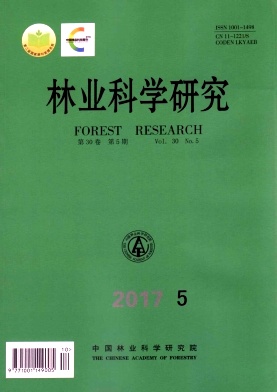


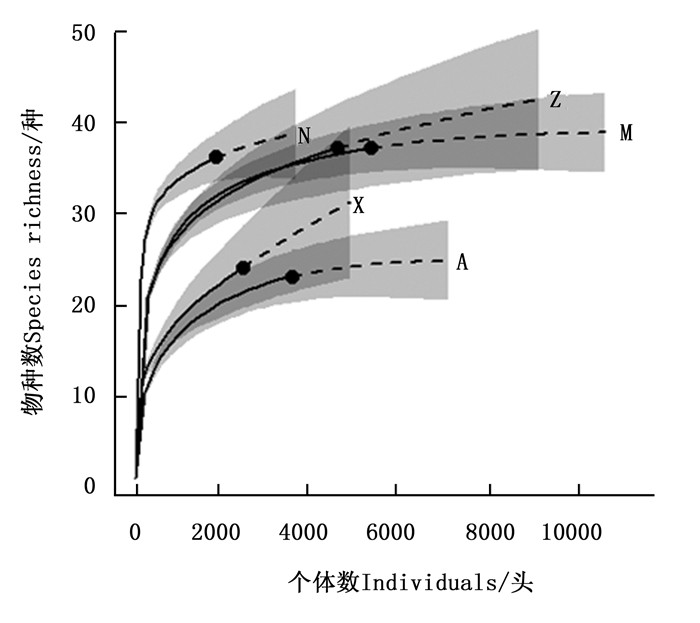

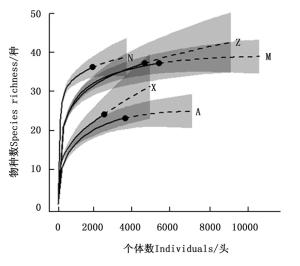
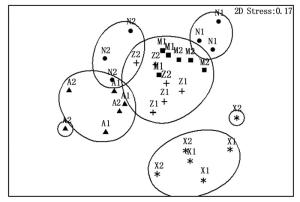
 DownLoad:
DownLoad:
